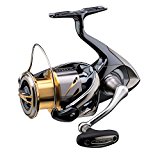Butterfly Peacock Bass Deep Water Fishing
For most of the time Butterfly Peacock Bass are best caught in shallow lagoons and slow moving rivers. Unlike other bass including the smallmouth, largemouth, kelp bass and so on, the Butterfly Peacock prefers the water temperature to be around 78°F to 82°F/25°C to 28°C degrees.
They’re attracted to the sun as it rises and heats the water and they come out of hiding and bathe in the sun. These fish are not active at night and before the sun comes up. They need heat to be able to eat and spawn.
When to Look Deep
In the high heat of summer months when water temperature exceeds 82°F (28°C), they’ll often go deep to cool down. This is when the sun is at its peak from 11:00h to 15:00h. However deepwater fishing is almost as challenging as fishing for them in the winter for some of the same reasons.
They’ll also charge the deep water when you set the hook. If you can’t see them in the shallows and surface lures and poppers are not working, use deep water techniques and tackle.
Deep lakes and lagoons offer the greatest challenge for catching peacock bass because they hide and lay in wait for prey around fallen timber and sunken logs and debris. Amazon lagoons in particular are full of sunken plant and tree debris making deep diving fishing a challenge. Also if the water clarity is very murky and difficult to see more than 1 or 2 feet this makes it difficult for them to see food, but they can still hear well.
What to use
The focus has to be on spinner lures, crankbaits and propeller lures.
While the techniques for catching Butterfly Peacock Bass are very similar to that of the largemouth bass in these conditions, the terrain is much more difficult so be prepared for snags and use bait instead of expensive lures.
Florida lakes offer much less in the form of debris and the water clarity is much better. Snagging your line from weeds rather thank sunken trees and brush piles is more likely here.
The most effective technique for going after peacocks in this habitat is to use a weedless fly with a sinking rig. While effective, it doesn’t offer the same level of excitement as fishing for peacocks in shallow waters. In the deep water, sunlight is not as strong and peacocks are not as quick. A good fly to use is a Dahlberg diver or a Galasch-type popping bug.


